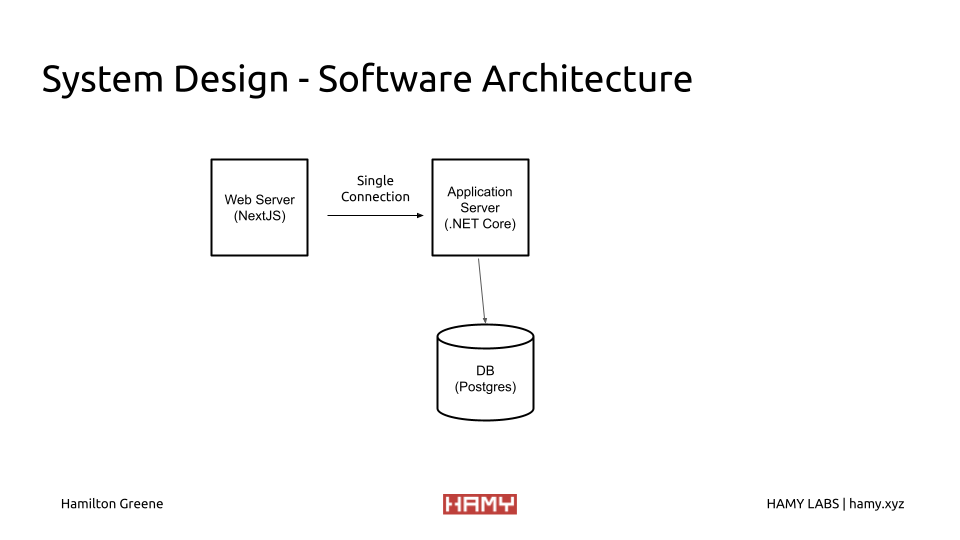Essay - Published: 2021.08.31 | business | google-cloud | technology |
DISCLOSURE: If you buy through affiliate links, I may earn a small commission. (disclosures)
In this post I'm going to share how I host my full stack business apps for less than $10 / month on Google Cloud. I'll also go into why keeping costs low is so crucial to my business strategy as a solopreneur and why I chose Google Cloud as my host of choice.
I love building projects. That's what this site is all about. As part of my project-building practice, I build a diverse portfolio of businesses on my path to sustainable solopreneurship.
A key part of this strategy is keeping costs low so that I can:
As a solopreneur, I have a very tight resource budget. It's just me with no corporate engine backing me. As such, I have to keep a close eye on my expenditures, particularly wrt:
A blown budget in any of these could seriously hamstring my ability to iterate quickly and thus impact my long-term chances of success.
Taking this context into account, I basically have three primary values when it comes to picking a good host:
I've implemented this strategy by choosing a fully featured cloud provider - Google Cloud. I like it because it fits many of my needs:
One superpower of Google Cloud (that it shares with some of the other big providers, but not many of the littler ones) is serverless. Serverless is pay-as-you-go so you only pay for what you use. For many of my projects, they get minimal traffic so using serverless can minimize my ongoing costs from projects that aren't doing so hot. This saves resources for new projects, without having to kill the old ones right away (a problem I've faced before).
Another superpower is that serverless deals with the machines for you. This means less dealing with the command line, installing things, dealing with dependencies, etc. You can set some configs and have your code run and scale without clicking another button.
For these reasons, serverless is a pretty good choice for me as a solopreneur and solo developer.
Now there are some drawbacks to serverless that I see. Namely:
Now this isn't a huge problem if your usage scales with your customers (hopefully turning a profit) and / or you're okay being with that provider for awhile / paying the cost of leaving.
For me, I'm not okay with that - I don't want to get bit by my past decisions. So I like to look for a very specific type of serverless that runs containerized applications. This brings with it a few benefits:
This often costs a bit more than traditional serverless due to container spinup times but can often scale at a much more linear rate and has no vendor lockin. I'm okay paying a bit more on the lowend to have a smoother ramp up and future of development. So I choose technologies like this.
Before we get into the specific technologies I use with Google Cloud, I wanted to quickly touch on why Google Cloud vs other big providers. For me, it comes down to a few things I like:
Many of these traits are shared with other big players, but Google Cloud scored well in all of these for me so I went with it and haven't had any regrets.

System Design
My usual system design is a simple Web, App, DB setup. Web deals with external traffic, App deals with the API layer and app logic, and the DB deals with storage. This setup (or a subset of it) can typically handle most workloads up to 100k customers and commonly up to 1M with a bit of configuration. It's simple. It works. I like it.
For specific technologies, I use:
So with my typical system design:
It comes out to about $8 / month for most of my projects. A majority of this cost comes from Cloud SQL because it always runs. My Cloud Run instances are almost always covered in the free tier because I don't get much traffic - even across all my hosted projects. Cloud Run's free tier is pretty generous and some informal studies that even frequent spin up / spin down of Cloud Run is far cheaper than other similar options.
Let me know how you host your full stack apps for cheap! I'm always looking for ways to make my apps cheaper and more efficient.
I'm currently working on some resources and project files that make building and launching projects with this setup super streamlined. The goal is to make it easy to launch a business that can scale to 1M users in less than an hour - something I've been struggling with myself for the past few months.
Stay tuned for more on that and happy building!
-HAMY.OUT
The best way to support my work is to like / comment / share for the algorithm and subscribe for future updates.